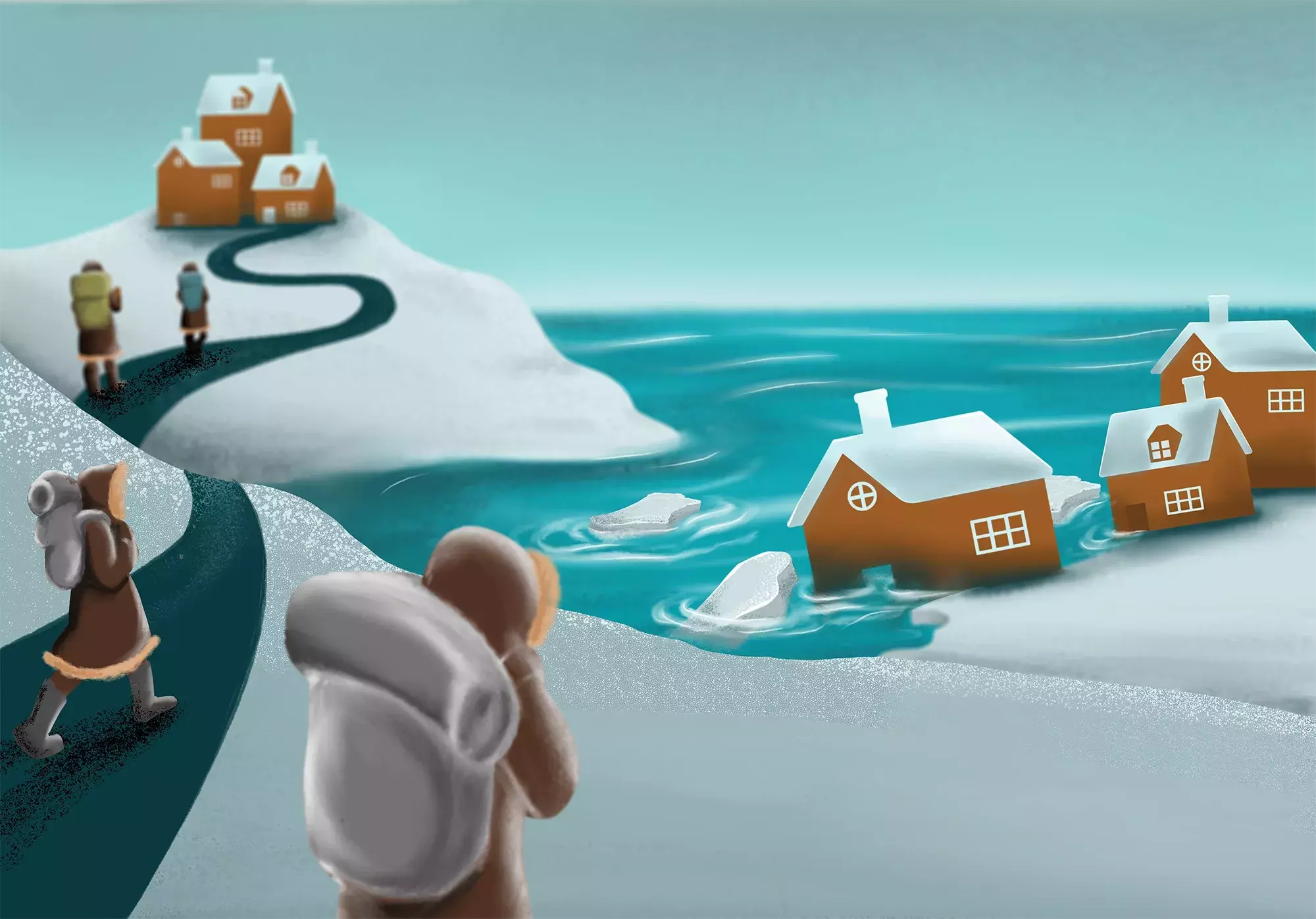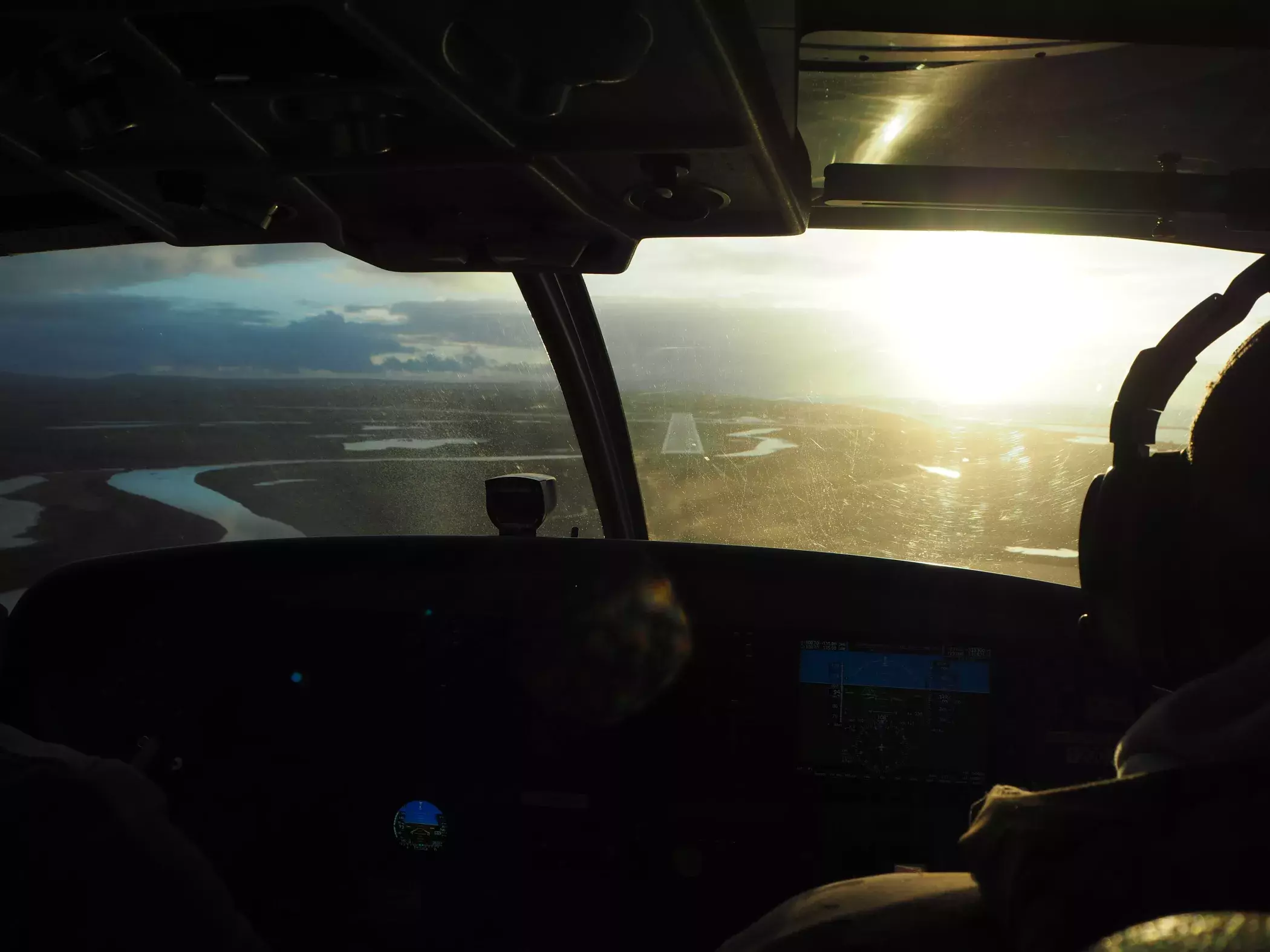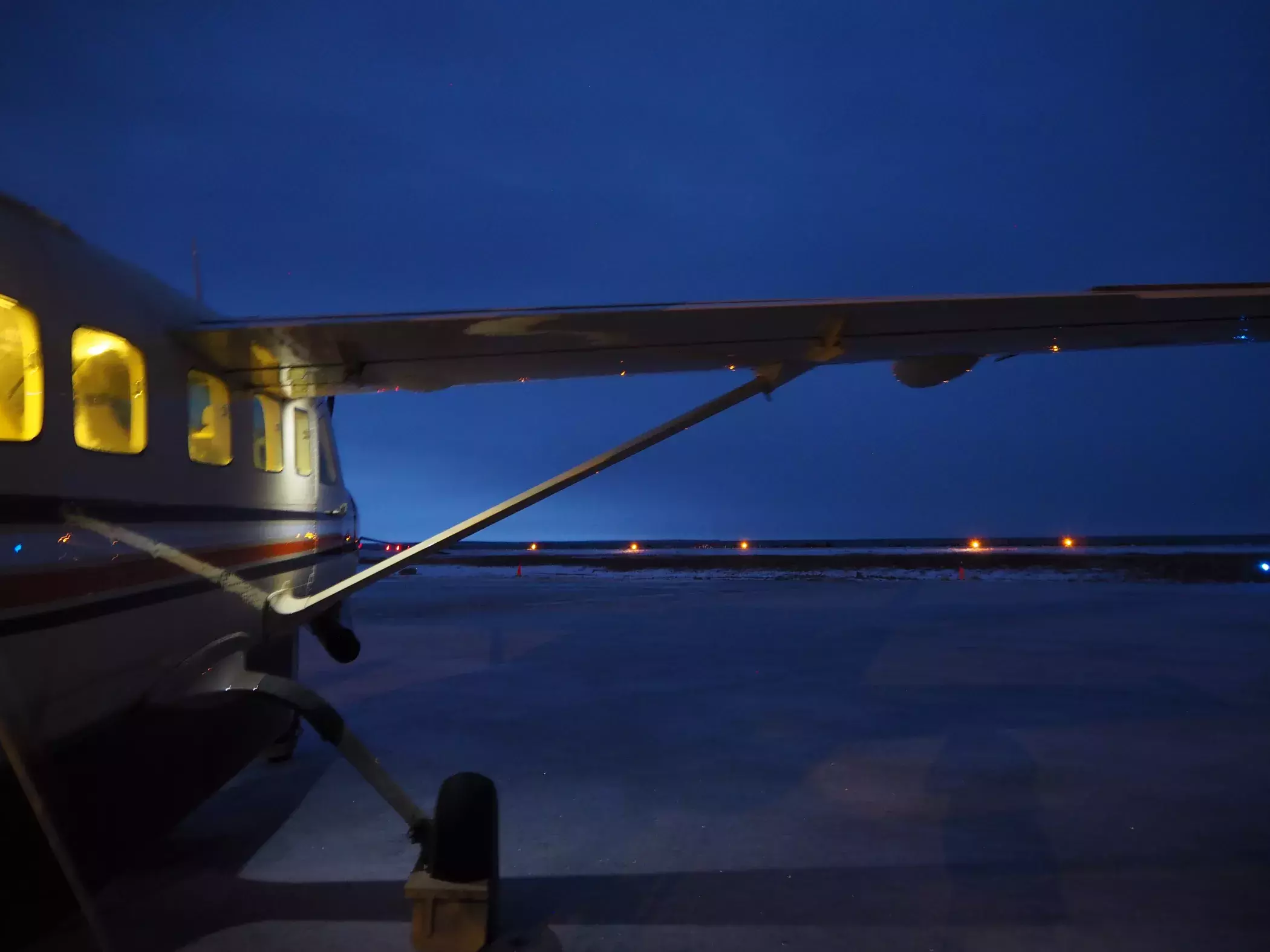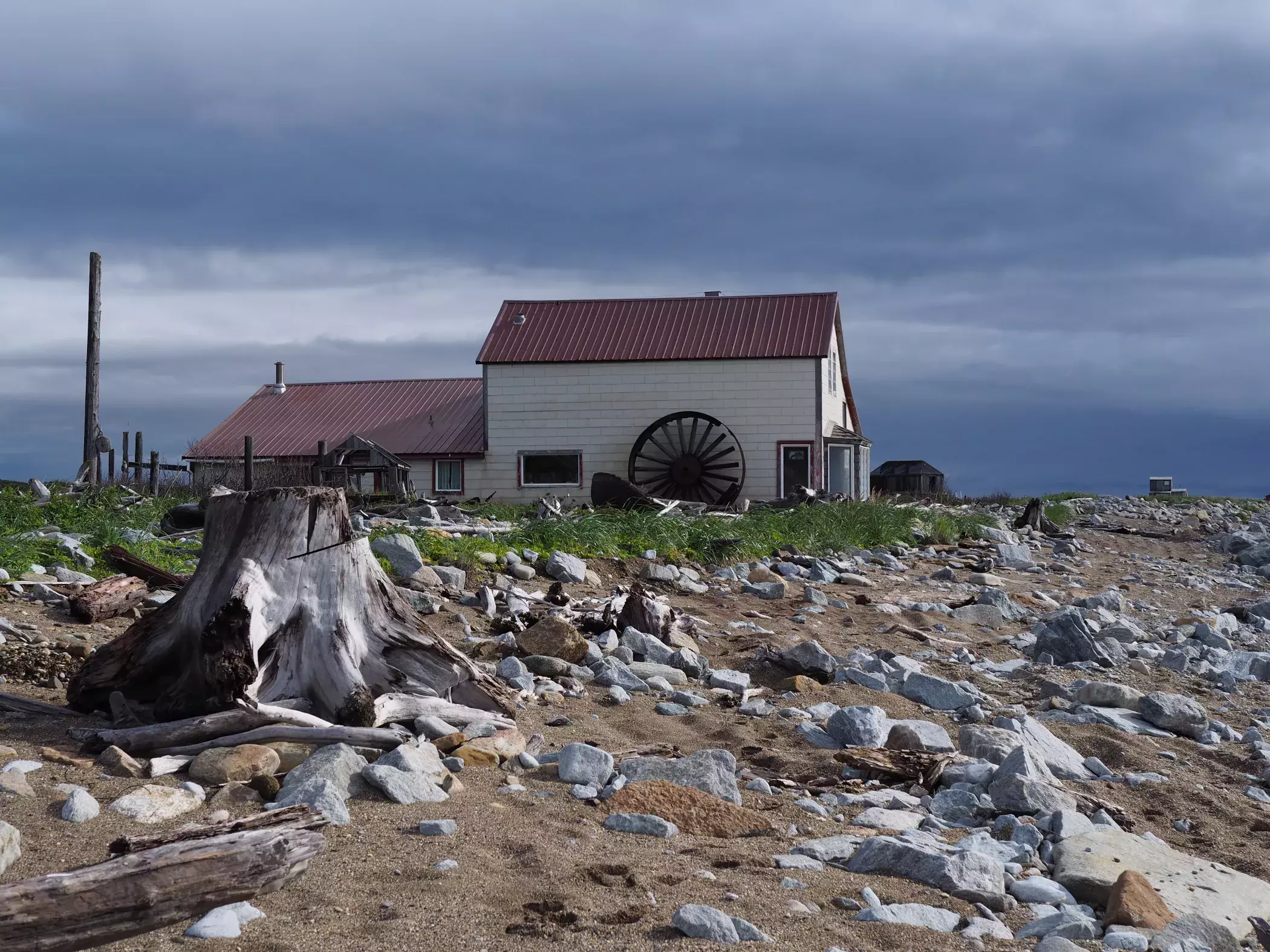Lifting the fog of climate adaptation: a journey into Alaska’s mitigation efforts

Last spring, I sat uneasily in a ten-seater airplane, descending into a thick fog bank in Western Alaska. From my seat just behind the pilots, I watched the altimeter tick down—600 feet, 400 feet, 300 feet—but there was no sign of the runway, except for the cartoonish version on the digital cockpit display.
The dense fog is common in this roadless region, one of the most remote in North America. Across much of Alaska, Indigenous villages are disconnected from the continent’s road network. Small propeller planes, like the one on which I was traveling, are the primary link to the rest of the world.

The village I was hoping to visit on this particular instance is home to a small Iñupiaq community. Due to climate change—particularly worsening storms and retreating sea ice—the village faces an existential threat from climate change. (To protect the village’s anonymity, I do not use its name in my research.) The village rests on a rapidly eroding bench of sand and soil, and is classified as “imminently threatened” by the United States’ government’s own experts.
As we flew closer to the ground, still with no glimpse of land, the co-pilot gave a cool wave of his hand, meaning “go around,” and the pilot pushed forward on the throttle and pulled back on the yoke. The plane climbed steeply and banked out right as the pilot initiated a teardrop-shaped U-turn. Shortly after beginning the maneuver, the fog bank cleared, revealing the dark-blue Bering Sea below and, soon after that, the runway came into view. We circled around and landed easily on the bumpy gravel airstrip, flanked by water on three sides.
Of all the environmental changes that have arrived in this region in recent years, two stand out for the danger they pose to local Indigenous communities. The first is the increasing intensity of fall storms—such as the extra-tropical cyclone that battered the region in September 2022. The second is the marked decline in winter sea ice formation. Areas that used to see “freeze-up” in November now wait until January. Because unfrozen shores are much more vulnerable to erosion, these two issues have braided together to pose a profound threat to low-lying villages.

Once the plane had landed, I hitched a ride to the local government office to begin one of several research visits. I spent the following week learning from Tribal government officials about how they are navigating the difficult process of trying to save this particular village from devastation. In this case, the only long-term solution is to move the community to higher ground. But doing so is a massive political and infrastructural undertaking; the only Alaska Native community that has started relocating—Newtok—has faced a host of challenges and delays. As a result, the community is currently fractured into two halves, nine miles apart: one half at the old village site and the other at the new site.
My research—part of which was recently published in Nature Sustainability—builds on the work of other academics and on government reports investigating the barriers to successful climate adaptation. My project, however, sought to document these issues up close: by spending days, weeks, and months with Alaska Native government officials, shadowing them at work and gaining a perspective that I could not have found had I simply conducted interviews from afar. (This commitment to firsthand fieldwork is part of what makes geographical research stand out from many other social science disciplines.)
From this vantage, the issues facing Indigenous communities begin to look remarkably complex. In particular, I documented how bureaucratic and colonial systems that govern climate adaptation can shut down Indigenous sovereignty and lead to paralysis among threatened communities. Community leaders, for example, apply for federal funding to conduct urgent projects. But they become stymied by overly complicated application forms, or by competing with larger cities in the United States with the resources to hire a team of full-time professional grant writers. The feedback provided with the rejection letters displays a remarkable lack of understanding—as if each Tribal government had the capacity of a midsize American city.
Conducting fieldwork in person requires squaring conceptual analysis with real-world observation. For example, it’s one thing to speculate about the difficulties Tribal governments face when coordinating with the Federal government in Washington, DC. But sitting down with a Tribal leader and going through a grant application together, line by line, provides an entirely different perspective. So does joining a teleconference between the village mayor and a panel of bureaucrats trying to determine whether the village will receive assistance following a devastating storm. Stalled by bureaucratic failures, some tribal leaders feel abandoned in the face of worsening hazards. In this particular village, each autumn now brings with it a particular anxiety about what the coming weeks might hold.
These research moments were critical to understanding the problems inherent in trying to “build capacity” among marginalized communities facing dire climate threats. In the simplest terms, the idea of capacity building suggests that communities need to be fixed or improved, shifting attention away from the broken institutions and systems that fail to serve these populations effectively.

Rather than relying solely on capacity building, the climate crisis calls for an ethos of “capacity sharing,” where those with power and expertise proactively assist with adaptation efforts. In many instances, marginalized communities, such as those in Western Alaska, cannot be expected to rescue themselves from the problems that were created by their colonizers.
Climate justice is not simply a concept or a philosophy. It is a set of principles to manage crises and support threatened communities while respecting the principles of self-determination and sovereignty. Understanding what climate justice looks like—or doesn’t look like—requires engaging systems of power on all levels, from policy platforms to the everyday conduct of bureaucrats who turn policy into practice. Only by sharing capacity across institutions can we deliver on the promise of a safe and just future, helping climate-vulnerable communities land safely on solid ground.

